Roughhousing is an approach to customizing your surroundings that does not require perfection, but absolutely demands attention and adjustment. This approach involves generative design, the idea that, in the process of building something, you start with an idea, but you learn along the way what is and is not working, and you adjust accordingly.
I hold the opinion that something designed for use and comfort, the right size and shape, and in the right place, will most likely be beautiful. Sometimes it will require a detail to finish it in a pleasing visual manner, but proportion and location are 85% of the job.
I do not advocate for a utilitarian theory of beauty in architecture and design - that is something different, and it does not appeal to me, for it often prioritizes a conceptual ideal of utility over the reality of actual human use, and it can lead you right to Boston City Hall:
I am an advocate of Christopher Alexander’s approach which holds that beauty is something baked into the pie of the universe, and thus there is a way to know it, and create it. (Alexander could perhaps be considered the conceptual originator of generative design - but I do not know enough about design history to claim this with certainty)
This type of design involves much on-site consideration, and it is what guides me, whether I am figuring out the right place, height and shape for a simple shelf, or musing over how best to configure our outdoor space.
Things I am Noticing at Our House, Now that the Snow has Melted
Here is a snapshot of our yard at the moment:
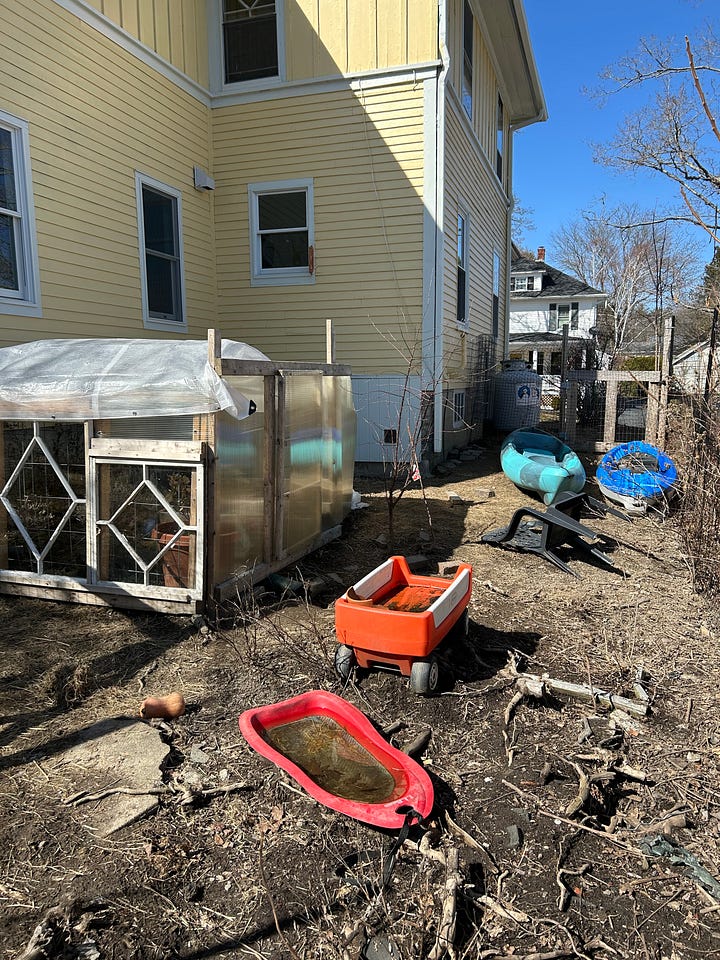


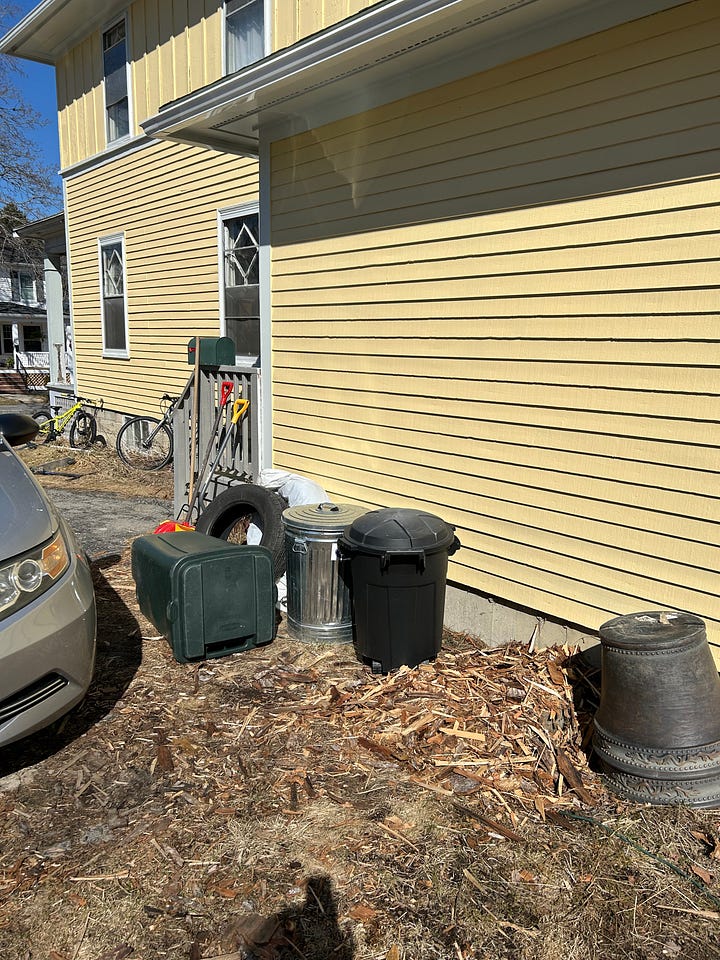
The needs identified include:
a shed for bikes
a shed for garbage cans
storage for kayaks
taking down and maybe replacing the greenhouse (the wire roof collapsed under the weight of snow)
Considering the first three needs, they can probably be filled by one structure, with roofed storage for bikes and garbage cans, and shelves for kayaks on the back.
I’m not sure what to do about the greenhouse, beyond taking it down. But as I consider that, I also notice this:
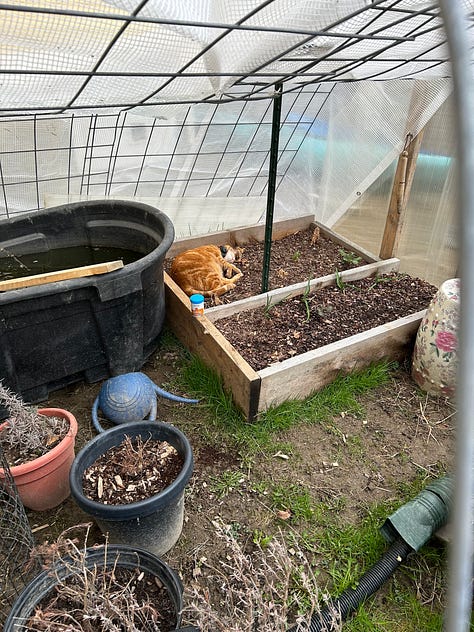
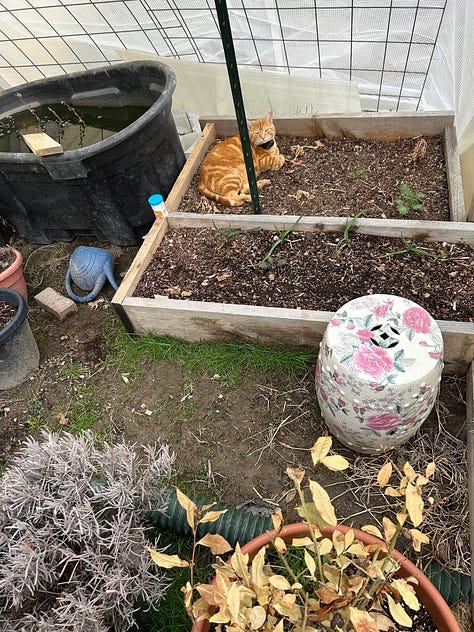

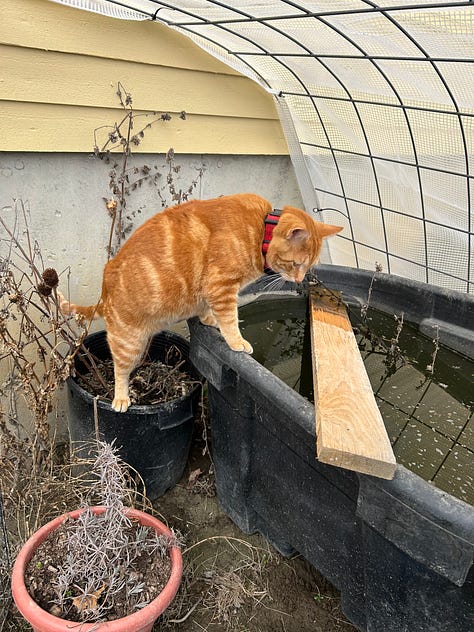
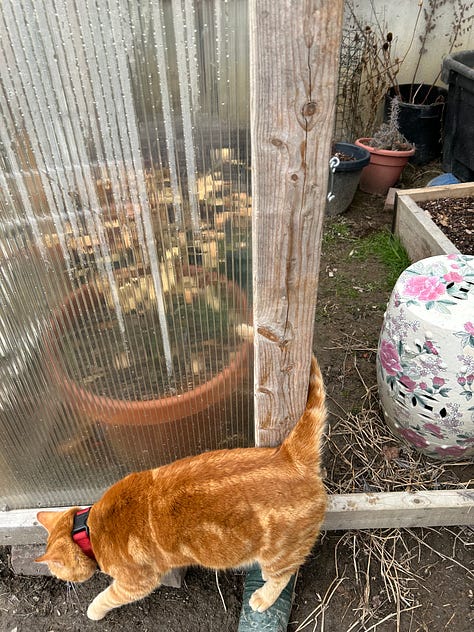

Our orange cat, apparently, has taken a liking. And I am in favor of any of his leisure activities that don’t involve killing birds.
Another interesting development, our big black dog, who used to delight in chasing chickens, has now decided that she is “cool” with them.
She must have figured out that they are the source of the fresh chicken poop which she so enjoys.
Adjusting Plans
Looking over my last set of graph paper plans, I made some adjustments:


I kept the regions looser, defining spaces for particular uses, rather than trying to nail down where to specifically place things like garden beds. When looking at graph paper, and drawing plans, it can be temping to micromanage the space, but I think it is better to make a general plan and feel into your adjustments on-site, as you are building things.
Another development is my recent discovery of the term “culinary landscaping”, which in my mind is an excuse to do crazy things with wire archways and vegetable vines. Sometimes a word or concept can give you not just inspiration, but permission to structure, make or do something that you hadn’t thought of before.
What to do If You Would Love to Create an Outdoor Space, But Don’t Have One
Many people are in this boat - but there are many opportunities to get creative. This is an excellent little book, which discusses options for farming on small trellises, planting indoors (in front of windows, or even in cabinets), sneaky rooftop gardens and other interesting and inspirational ideas:
What to Do If You Have an Abundance of Space and Limited Resources
You might think it would be nice to have something like this to work with:
But not everyone has a team of farmhands and a copious well of money to dip into. For someone who loves to do projects, and customize their surroundings, a wealth of space can be overwhelming - I know, because I have experienced this. My advice is to consider the Bower Bird (the master of generative design) and just take it one essential detail at a time.
FULL DISCLOSURE! Sometimes I include Affiliate Links in my articles. This means that if you purchase an item from these links, I will receive a small commission. I only ever recommend items or companies that I have used and am VERY happy with - and if I ever link to an item that I haven’t used, I make this clear in the article.








